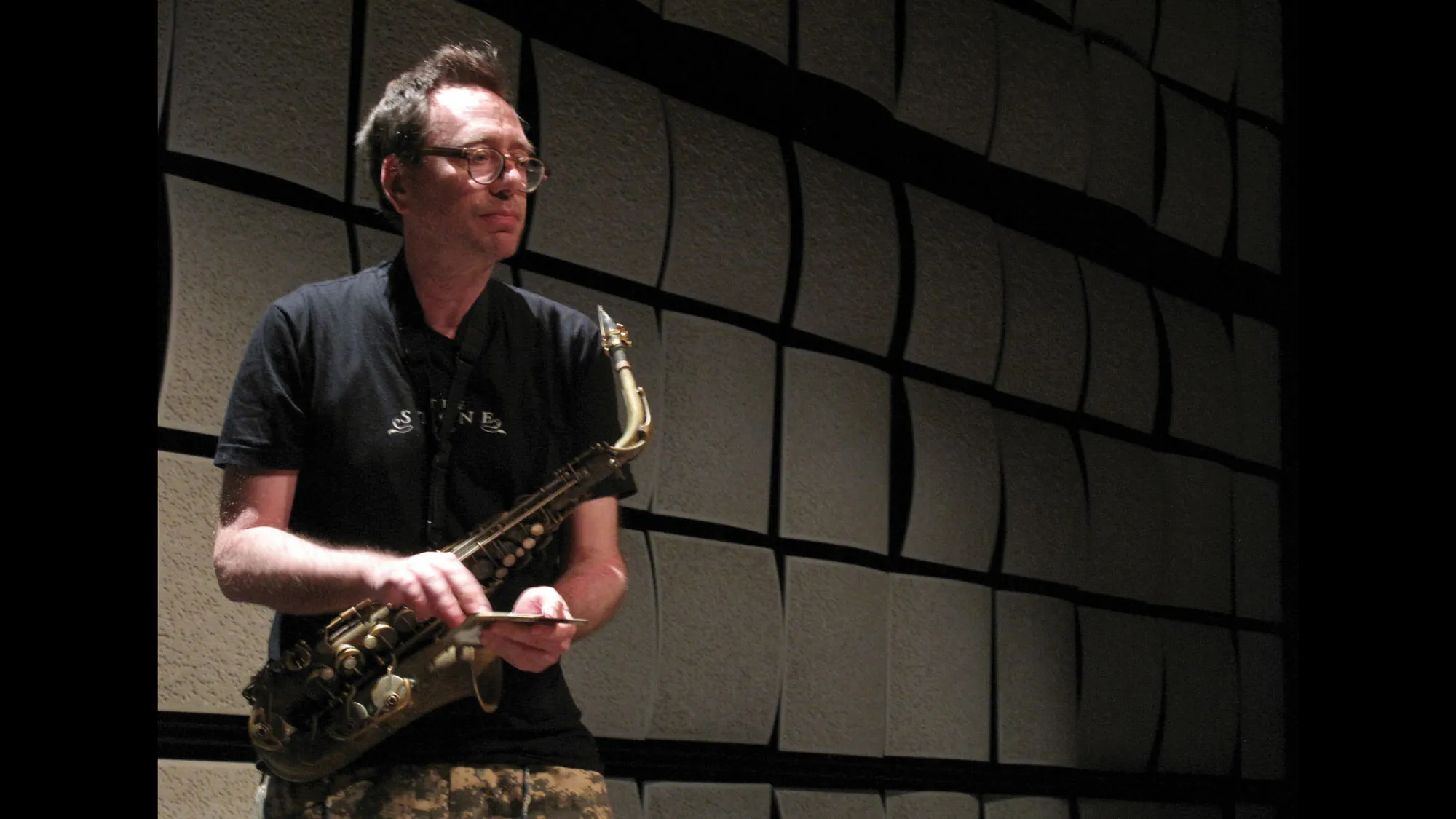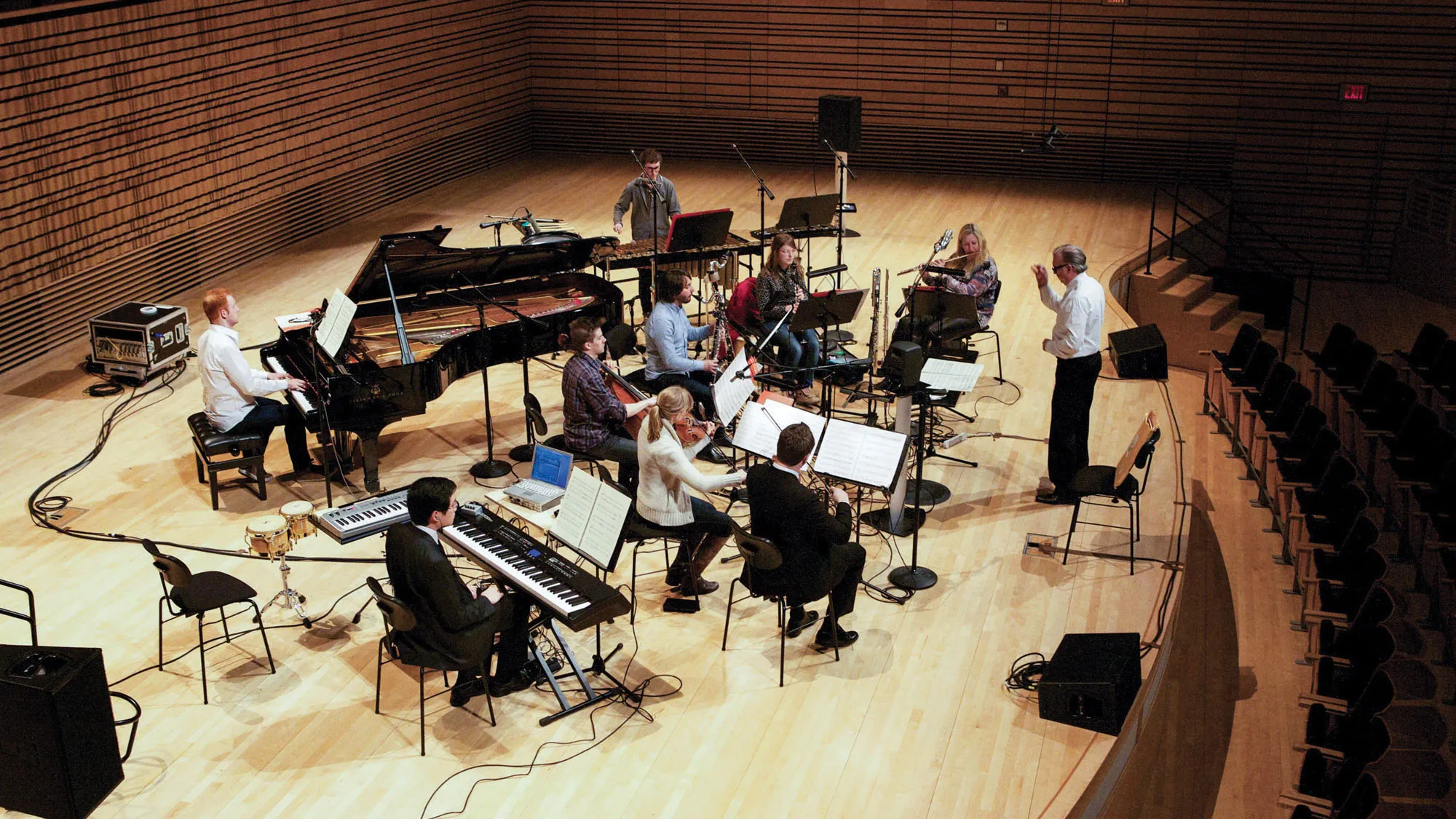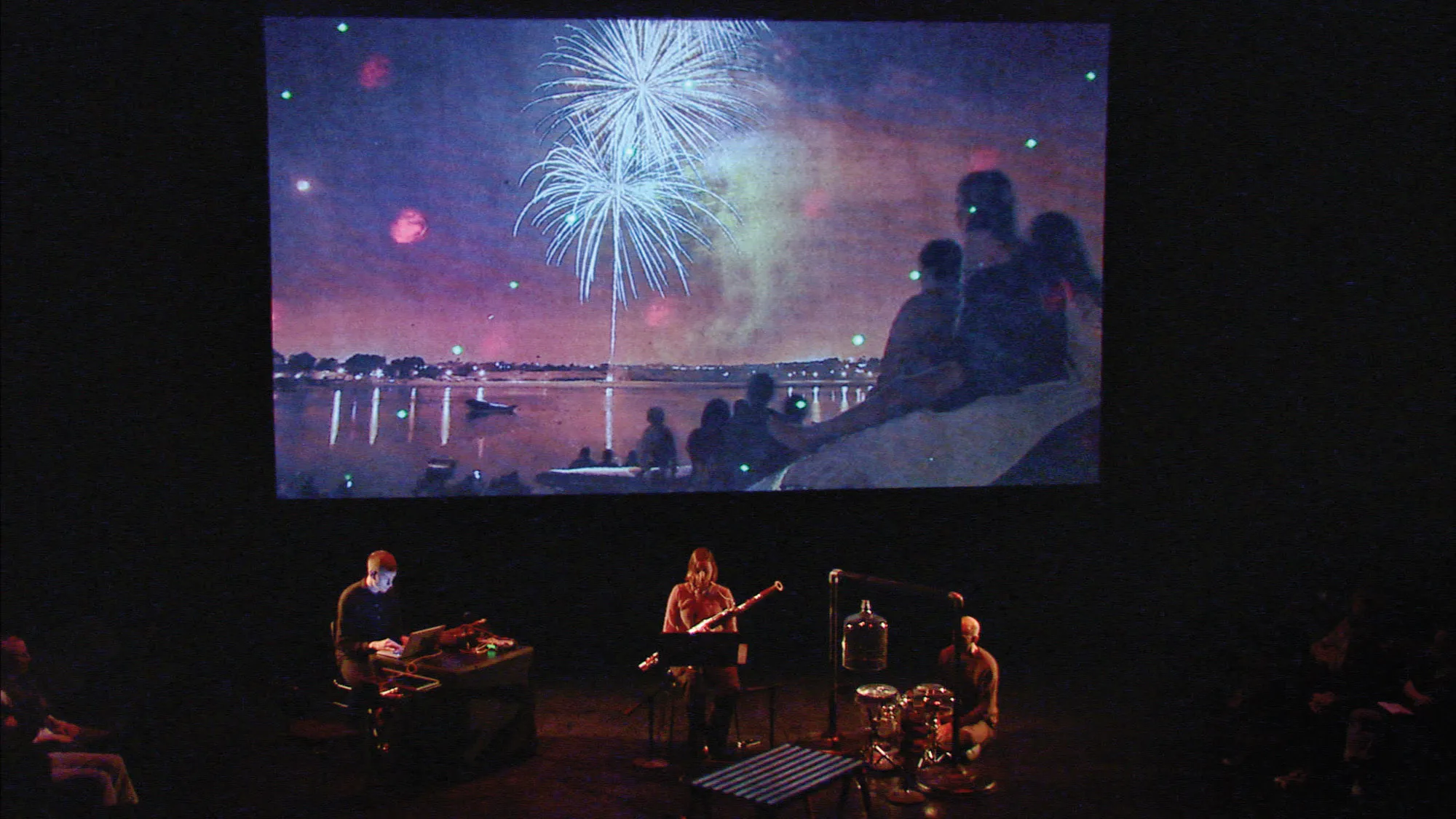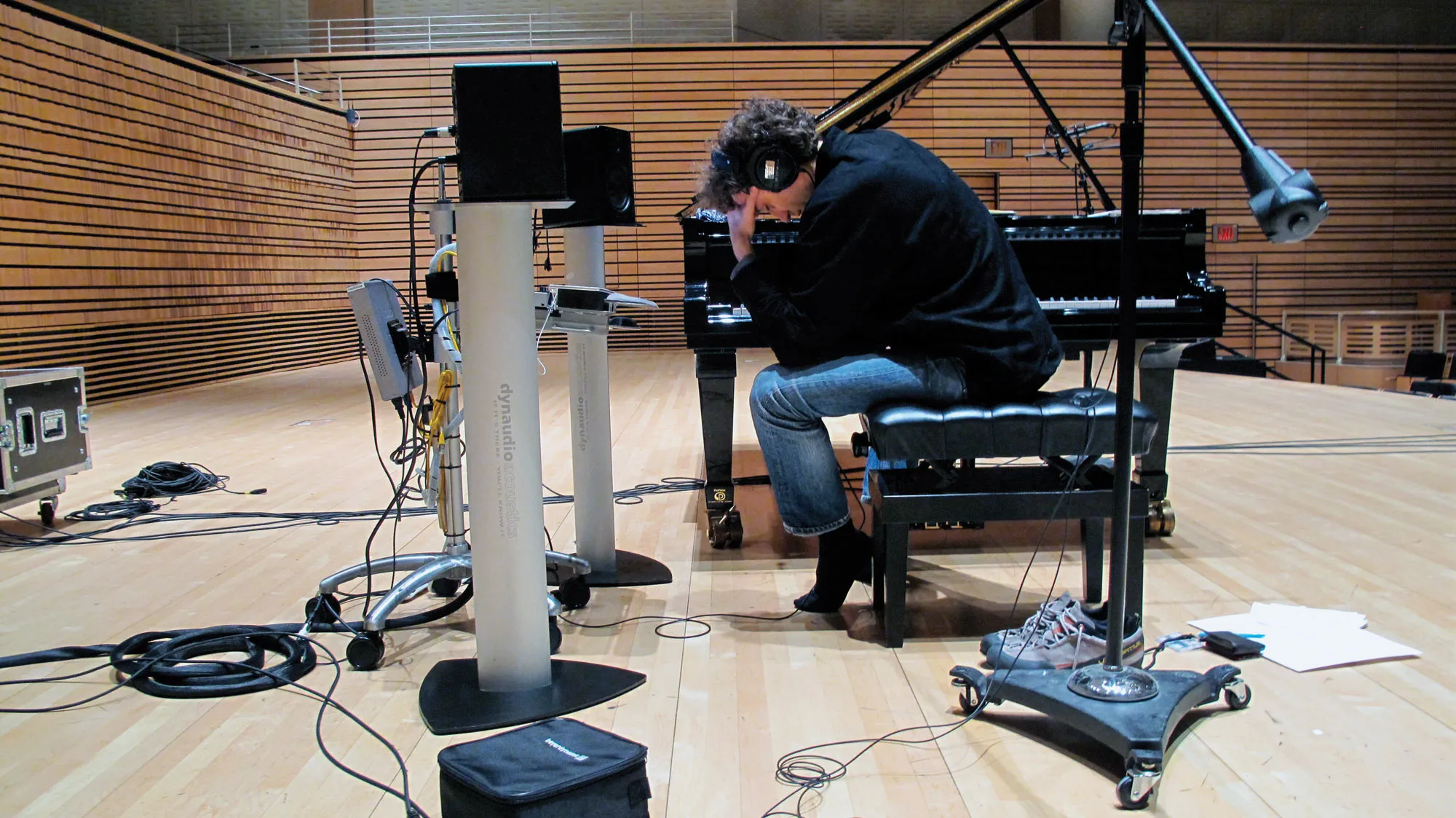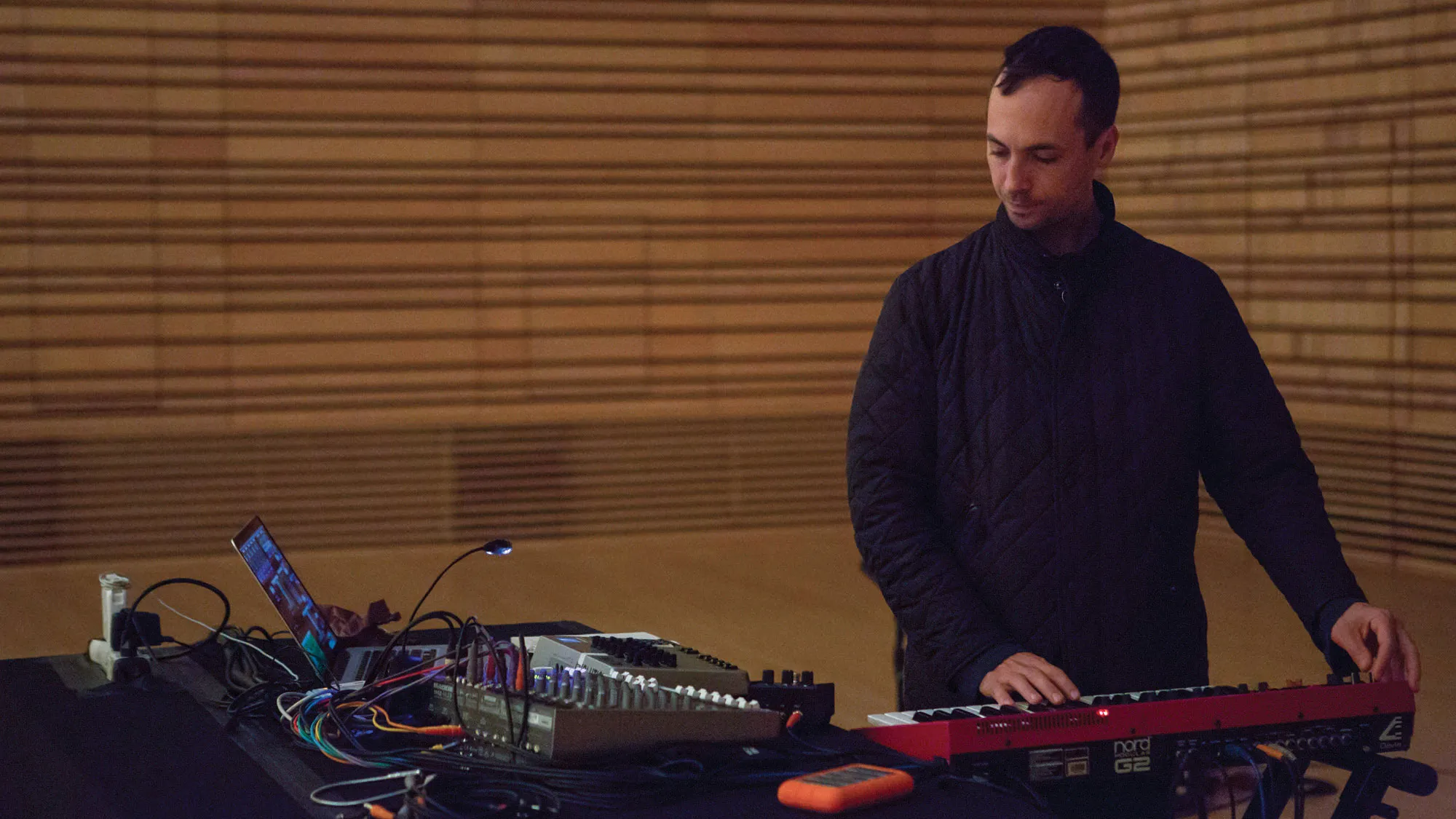
Colin Stetson + Tyshawn Sorey
Saxophonist Colin Stetson and percussionist Tyshawn Sorey, each performing a set of their own works, used extraordinary techniques to take their instruments into uncharted territory, creating music that exists in a cross-genre realm, drawing from jazz, classical, and pop with equal measure. Special guest Sarah Neufeld opened with a solo violin set. Colin Stetson has worked with dozens of artists including Tom Waits, Arcade Fire, TV on the Radio, Feist, Laurie Anderson, Lou Reed, David Byrne, LCD Soundsystem, The National, Angelique Kidjo, and Anthony Braxton, and is member of the band Bon Iver.
Tyshawn Sorey is a composer, performer, educator, and scholar who works across an extensive range of musical idioms. As a percussionist, trombonist, and pianist, Sorey has performed with his own ensembles and with those led by Muhal Richard Abrams, Steve Coleman, Butch Morris, Michele Rosewoman, Steve Lehman, Vijay Iyer, Peter Evans, and Ellery Eskelin, among many others. Sarah Neufeld began playing the violin at the age of three; she is best known as a member of the indie rock phenomenon Arcade Fire, as well as the instrumental post-rock ensemble Bell Orchestre.
Main Image: Colin Stetson in studio 1, 2012. Photo: EMPAC/Rensselaer.

